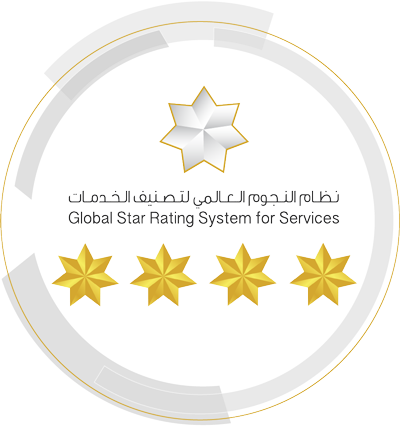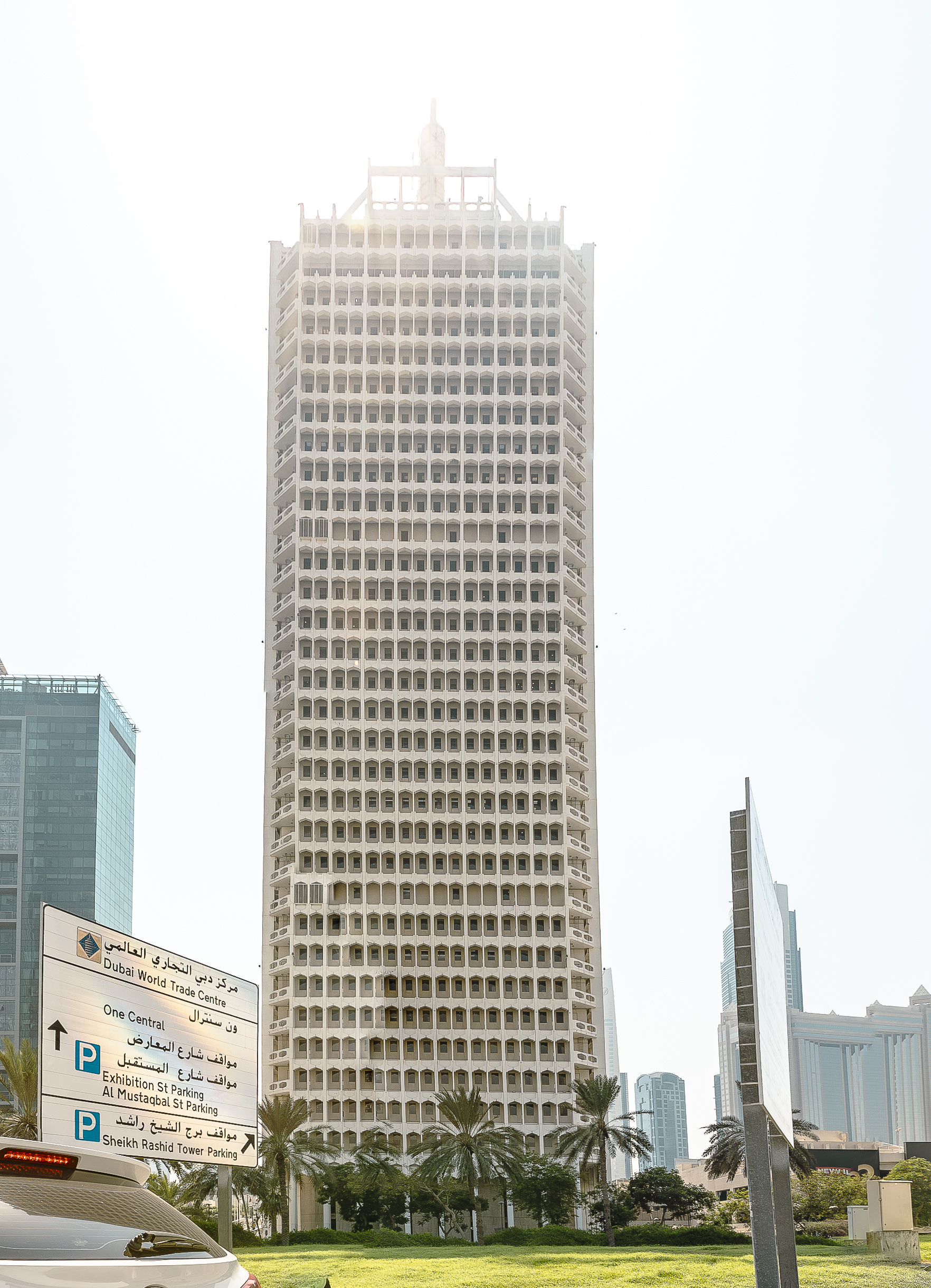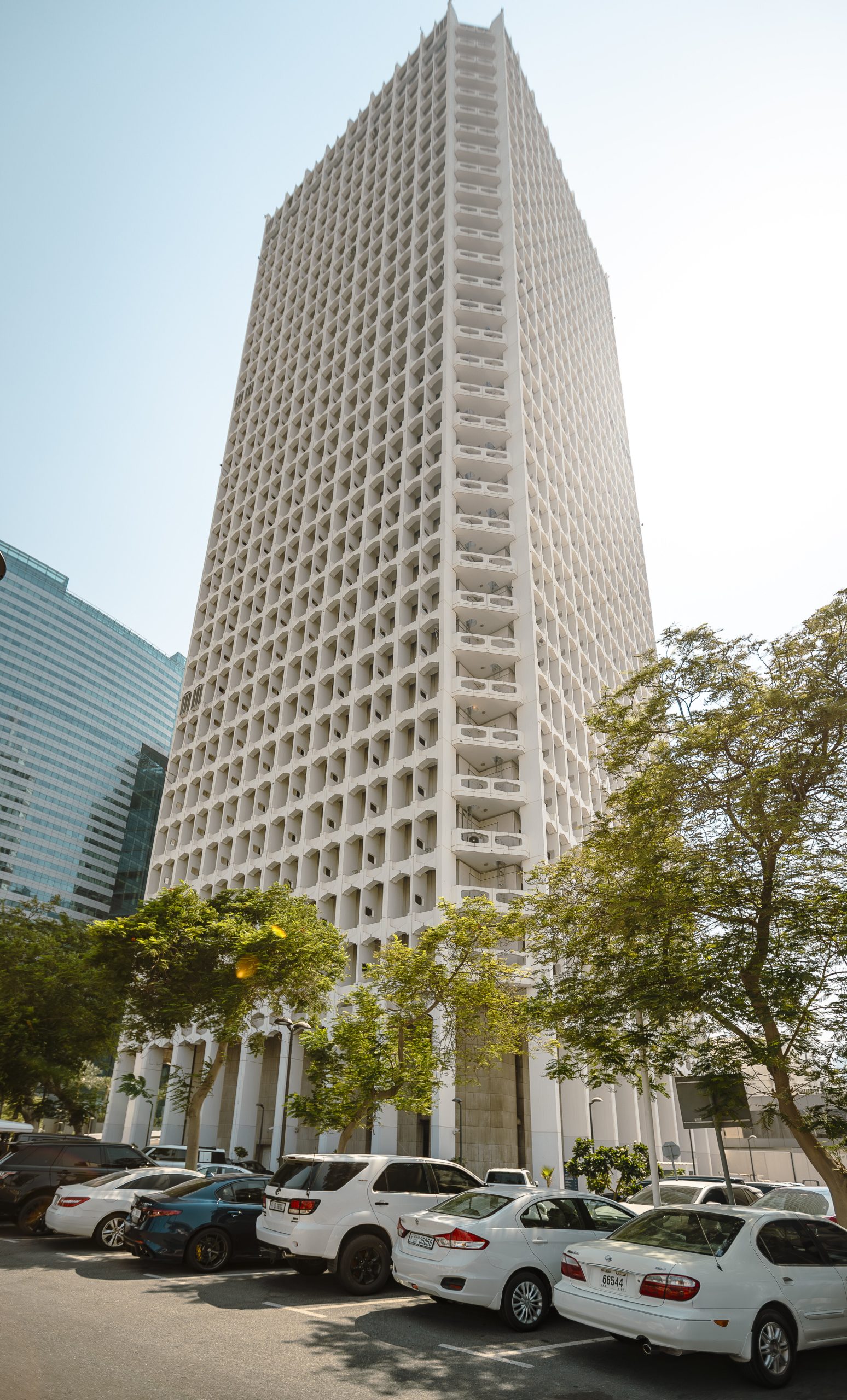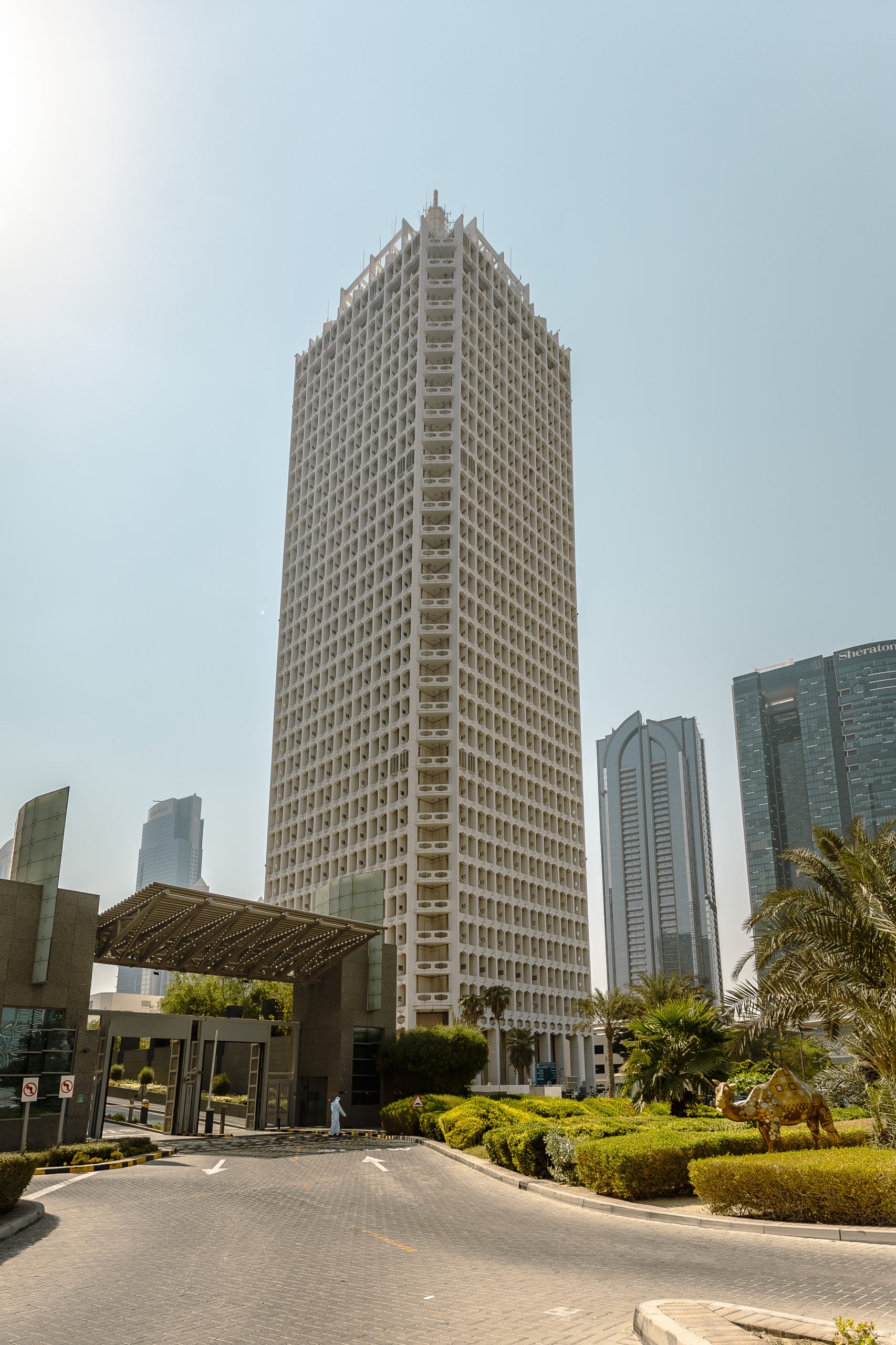
Burj Rashid
General Description
Burj Rashid was inaugurated in the year of 1979, and until the beginning of the twenty-first century AD, it was the tallest tower built at the time in the Arabian Gulf. Designed by British architect John Harris and constructed through WSP Middle East, the tower consisted of 39 Floors making it the tallest skyscraper among the gulf countries well into the 21st century. The building was a part of a bigger vision, of the late Sheikh Rashid bin Saeed Al Maktoum, as part of the urban, economic, and commercial development of the city of Dubai.
Sheikh Rashid approved the design of the tower which consisted of a hotel and exhibition space in May 1974 and the construction was completed in 1979, three months prior to the completion date, due to the Sheikh’s continuous and daily supervision on the project alongside the project team. Work on the “Sheikh Rashid Tower” project gradually rose from the ground through workshops that operate around the clock and include about 1,700 workers and 100 engineers working hard to complete the project. The center met all international commercial requirements, as it includes spacious offices, bank branches, a first-class hotel, a restaurant, exhibition spaces for multiple purposes, halls for conferences and exhibitions, a theater for lectures and cinema shows, and parking lots that can accommodate thousands of cars.
The tower was built of reinforced concrete and steel with a square base. It consists of 39 floors, and the last three floors are retracted inwards so that the bases have pyramidal edges. The tower is topped by a cylindrical figure, which reaches more than twenty meters in length. The architect also adopted many different building materials that are compatible with the nature of the place and its determinants, for example, prefabricated concrete units were used as sunlight refractors in the external facades of the tower, and the main columns and vertical panels in the internal spaces of the tower.
Criteria
01
Demonstrates a meaningful association with individuals, communities or events that have made a significant contribution to the broad patterns of the UAE’s development.
02
Embodies the distinctive aesthetic, physical, or architectural attributes characteristic of the political, social, and economic trends of a particular period.
03
Demonstrates an approach to and/or a lasting influence on urban planning or architectural, urban and/or landscape design that can be characterized as significant in the UAE or globally
04
Demonstrates skill and expertise in resolving the relationships between mass, interior and exterior spaces, materials and detailing that is characteristic or an interpretation of Modern and post-Modern movements, or other recognized design movements.
05
Demonstrates the use of innovative technology to solve challenges for its time.
06
Demonstrates a sustained environmental performance quantified in terms of material use, resource consumption and environmental impacts over the whole life cycle.
07
Contributes to the community’s sense of identity and enrichment of the UAE’s diversity, or is recognized as a place of collective memory for the UAE.
Statement of Significance
Sheikh Rashid Tower stands as a defining landmark in the commercial and urban story of Dubai and the United Arab Emirates. Since its inauguration in 1979, the tower has not only transformed the city’s skyline but also captured the UAE’s ambition, innovation, and emergence as a key player in global commerce. Once the tallest building in the Arab world, it quickly became a dynamic symbol of trade for the entire region and now represents the UAE’s global business enablement, linking Europe, the Middle East, and Africa through its pivotal role at the Dubai World Trade Center in Downtown Dubai.
Encompassing 1.3 million square feet, Sheikh Rashid Tower continues to serve as the home for prominent regional and international companies, reinforcing Dubai’s and the UAE’s position as a premier destination for business, knowledge, and international collaboration. Over the past four decades, the tower has contributed immensely to strengthening the nation’s competitiveness, hosting events and enterprises that have propelled both the city and the country onto the world stage as leaders in business tourism, international events, and investment.
Nationally, the Dubai World Trade Center—with Sheikh Rashid Tower at its core—has been instrumental in advancing the UAE’s reputation as a global economic powerhouse. From 1979 to 2018, the Center hosted over 5,000 diverse business events, welcomed more than 30 million business visitors (including 12 million from international markets), and contributed over 200 billion dirhams to the UAE’s gross domestic product. These achievements have catalyzed not only Dubai’s development but also the broader economic and commercial dynamism of the nation, facilitating international trade and solidifying the UAE’s role as a central business hub on the world map.
The architectural design of Sheikh Rashid Tower, combining modernist elements with traditional motifs, embodies the UAE’s commitment to blending heritage with innovation. Its climate-conscious construction and enduring presence reflect both local culture and national identity. The tower is woven into the collective memory of Dubai’s residents and the wider Emirati community, its image even featured on the 100-dirham banknote as an enduring national symbol.
The journey of Sheikh Rashid Tower mirrors the UAE’s own transformation—from a solitary structure in the desert to a beacon of global trade, business, and opportunity. Today, it stands not only as an engine of Dubai’s growth but as a proud symbol of the UAE’s vision, ambition, and enduring leadership at the crossroads of global commerce.





